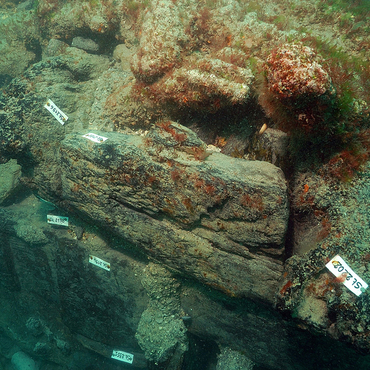
- Home
- Shipbuilding
- The structure of the Aimable Grenot
- Ballast
The centre of the wreck was hidden beneath several hundred cast-iron ingots, whose total weight has been estimated at some thirty tonnes. The surface of the ingots are stamped with the dates 1746 or 1747, and the names POTUXENT or Stepn Onion. These inscriptions allow us to identify them as belonging to two foundries in Baltimore, Maryland: the Patuxent Iron Works, located on the Patuxent River south of Baltimore and the foundry of Stephen Onion, which was built in 1745 on the Gunpowder River, north of the city. Both produced iron ballast bars for ships, English ones in particular, which were bound for Europe with their holds filled with Virginia tobacco.
Archaeological data indicates that the ingots were placed around and to the rear of the main mast step. A second, smaller group of pig-iron ingots was located at the foot of the foremast step at the front of the ship. An ingot from this area had the same inscription – 1746 Stephen Onion – as those around the main mast.
Between these two iron masses, a sizeable group of ballast stones were loaded in the ship's belly. The weight of these stones – granite and limestone blocks and flint stones – has been estimated to be seventy tonnes. A smaller group of ballast stones was also found at the rear of the vessel.







